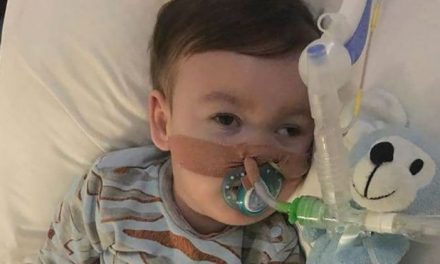When a person with a disability turns 21, they are no longer entitled to a free public education under federal law (often referred to as the “services cliff”) And for many American families, “the drop off this cliff leaves them scrambling, with few, if any, suitable options.”1 (Check out one of New Jersey’s solutions to the problem here ———————->>>>>>> https://www.youtube.com/watch?v=kGkfUkbMNg8&feature=youtu.be)
RELATED STORY:
Although people with autism have always existed, we’ve recently seen a huge spike in the number of diagnosed cases. And whether the reason is environmental or genetic (by far a smaller number of cases are genetic) “about half a million people on the autism spectrum will legally become adults over the next decade,”1 and we are woefully underprepared to deal with it:
“When they turn 21, these people leave behind all the programming and funding they received under the Individuals With Disabilities Education Act and enter a labyrinth of government services that vary wildly from state to state. Although people with other disabilities face similar problems, the staggering rise in diagnoses of autism creates a distinctly troubling dilemma in how to ensure that these people receive proper care.”1
And this problem remains understudied as researchers focus mainly on early intervention. Indeed, “less than 2 percent of all autism funding is directed to the experience of adulthood and aging—even though people with autism spend a vastly greater proportion of their life as adults.”1
If we are going to continue to ignore the environmental causes of autism, then we may have to switch our focus. “About half of adults with autism continue to grapple with aggressive, self-injurious behaviors as they get older, and about half are also unemployed—the lowest employment rate among disability groups. Especially for those with greater challenges, it is more difficult to attain the basics necessary to live a comfortable life: housing, job training, and social opportunities.”1
RELATED STORY:
It’s almost as if we’ve forgotten they exist. However, the bill is coming due and soon.
As the number of diagnoses climbs, many programs for people with autism are overcrowded and ill-equipped to handle the needs of their clients. And to add insult to injury, a wall of bureaucracy stands between families and the services required by their now autistic adult children.
“In general, adults with disabilities are eligible for resources through Medicaid, Supplemental Security Income, and various state disability agencies. These funds are meant to be combined and configured to fit the needs and priorities of each person, going toward everything from employment opportunities and day services to long-term care. But in reality, all the layers of bureaucracy often seem to tangle together for families. Individuals have to be certified separately by a variety of different agencies, all of which require their own documentation and have their own criteria for approval. Safeguards intended to protect adults with disabilities from being exploited often stymie parents and cost them money they simply do not have.”1
Again, it basically comes down to funding. Researchers are trying so hard to figure out what to do to combat an autism diagnosis that they’ve forgotten those who have already been diagnosed are growing up.
As the number of adults with autism surges, and as the research lags about how to help them achieve meaningful lives, the availability of affordable, quality programs cannot match the demand. The number of nonprofit programs that offer services tailored to people with autism, such as specialized job coaches, has recently increased. But even the most well-intentioned programs lack research—and therefore clarity—on how to best serve a population so diverse and so deprived.1
SOURCE:











